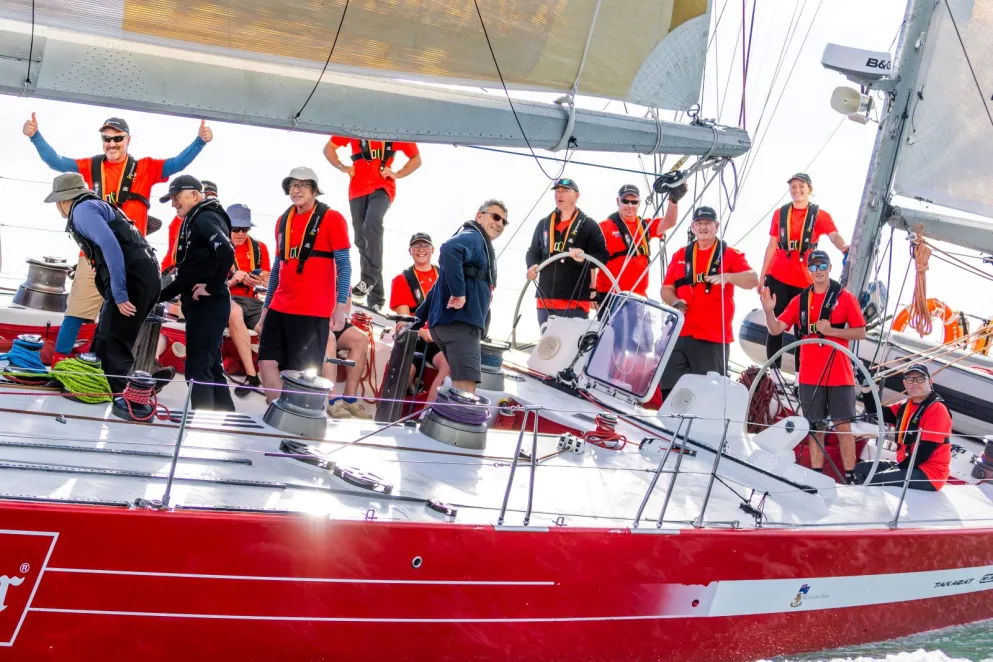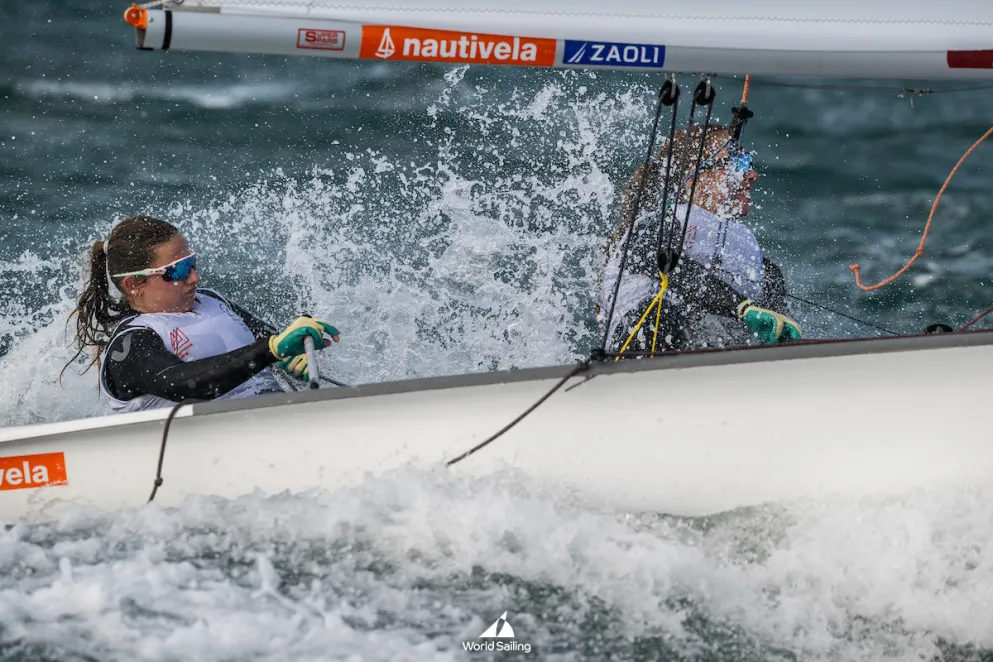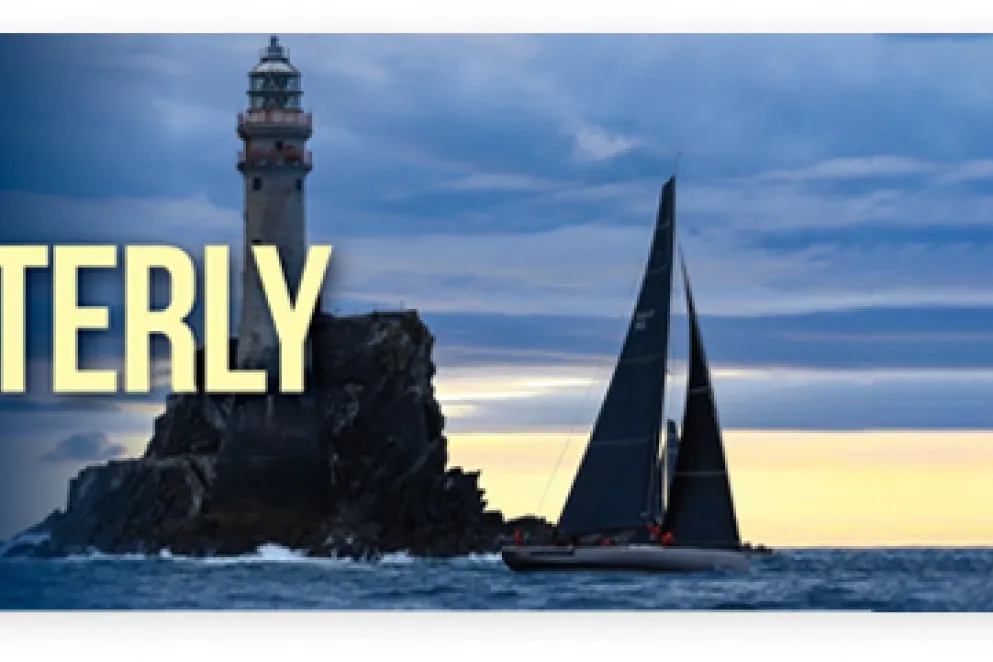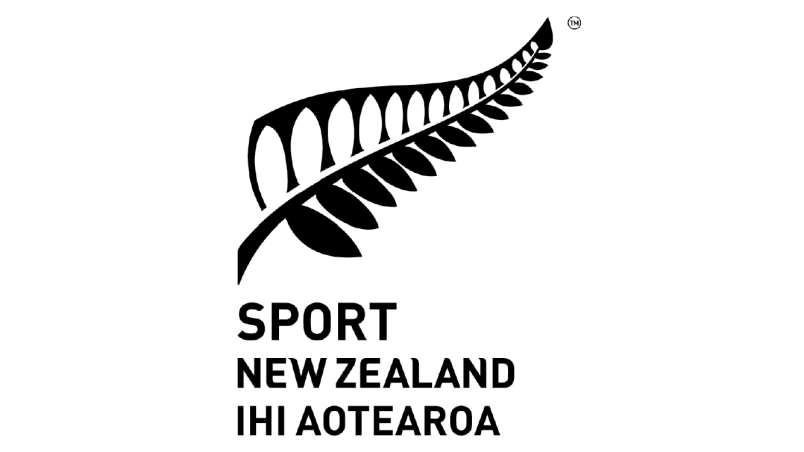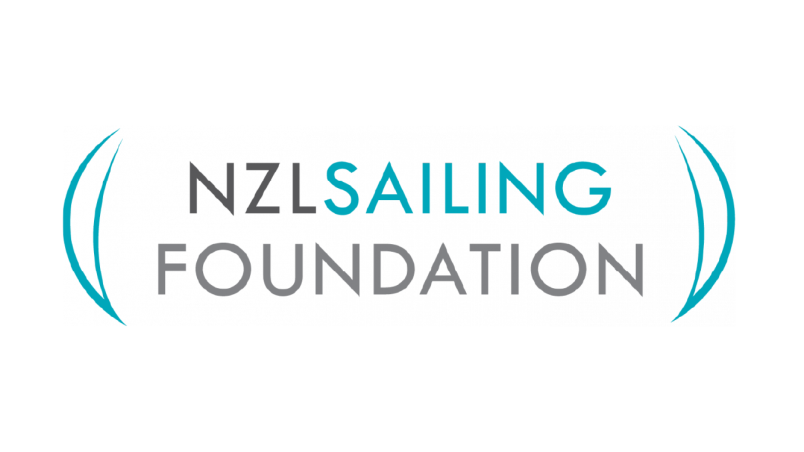'Prevention beats heroics': Safety first as skippers gear up for the PIC Coastal Classic
With less than three weeks until the start of New Zealand's biggest yacht race, competitors packed into the Royal New Zealand Yacht Squadron on Tuesday night for the annual PIC Coastal Classic Boat Prep and Safety Clinic, hosted by the New Zealand Multihull Yacht Club.
The session focused on safety preparation, Category 3 compliance, and seamanship, providing timely reminders for both new and returning skippers.
Led by experienced offshore sailor Simon Hull, race officer Megan Kensington, and NZMYC Commodore Adrian Percival, the clinic covered crew induction, emergency readiness, and the importance of maintaining reliable communication at sea.
"Safety starts long before the gun," said Hull. "A well-prepared crew and boat make all the difference when conditions turn rough. You win the Coastal before you leave the dock."
Kensington reinforced the importance of night-time drills, radio watch discipline, and crew communication.
"Keeping people warm, fed, and talking keeps them safe," she told the audience.
The evening also highlighted practical requirements under Category 3 including EPIRB registration, lifejackets with strobes, harness tethers, and up to date first-aid kits. Participants were urged to check navigation lights, test batteries, and prepare a clear onboard safety diagram showing the location of essential equipment.
Percival thanked all event partners and sponsors for their ongoing support of the PIC Coastal Classic, noting that their contribution helps ensure both the race and the safety programme remain world-class.
The next official clinic, the PIC Coastal Classic Forecast and Tactics, will be held on Monday, 20 October at 7pm, featuring insights from experienced offshore sailor Mike Sanderson and forecast expert Nick Olson of PredictWind.
Key messages from Boat Prep and Safety Clinic
Preparation starts long before the gun
Simon Hull's first point landed hard.
"You don't win the Coastal at North Head," he said, "you win it before you leave the dock."
That line drew a few laughs, but it set the tone for the evening. Whether racing to Russell or cruising to Kawau, the message was the same: every safe passage begins on shore.
He urged skippers to treat the Category 3 inspection as more than a formality. A Cat 3 boat, he explained, isn't just compliant - it's organised, tested, and ready for surprises.
A clear safety diagram showing the location of seacocks, fire extinguishers, flares, and first-aid kits isn't paperwork; it's a lifesaver. In the dark or under pressure, that diagram turns confusion into action.
The same applies to systems. Lights, radios, pumps, batteries - check them all now, not during the first squall while racing on October 24.
As Hull put it, "Small jobs done now stop big jobs later".
Training makes the difference
The next theme was crew preparation. Every boat carries its own culture, but every skipper shares the same duty: to make sure their people know what to do. That means a crew induction before every trip, not just every season.
"Even short races deserve proper practice,” says Percival. "The middle of the night in 25 knots is not the time to be figuring things out."
The point wasn't lost on anyone - practice builds confidence, and confidence keeps boats moving when conditions get rough.
Hull also reminded crews to rotate through different positions. A trimmer who understands the helm makes better calls, and a helm who's helped on the bow will plan cleaner manoeuvres. Skill-sharing keeps the boat flexible and safe.

The gear that saves lives
A good deal of the night focused on equipment. The rule that lifejackets must be worn at night and above 15 knots applies to every competitor, but it's sound advice for anyone at sea. Modern inflatables are light, comfortable, and fitted with strobes - there's simply no reason not to wear one.
The same goes for tethers and harnesses. "Clip on before you leave the cockpit," Hull said. A short line to a solid jackstay prevents most man-overboard situations altogether.
Another key update for competitors was the shift from PLBs to EPIRBs. All Cat 3 boats must now carry a registered EPIRB, and it's wise for coastal cruisers too.
Every crewmember should know how to deploy it, test it, and stow it securely.
Headlamps with red-light mode, personal strobes, dry and current first-aid kits - all featured in the safety checklist. And, as Percival noted, "if you've forgotten any of it, Burnsco’s open at 7 am on race day."
Crew wellbeing matters as much as hardware
Safety gear helps in a crisis, but avoiding the crisis matters more. Hydration, food, and warmth were common threads through every speaker's story.
Cold, tired sailors make slow decisions. Keep snacks and water within reach in the cockpit; pack a thermos of soup or stew for the night run north. Rotating crew early, before fatigue sets in, keeps performance steady and morale high.
Another experienced skipper suggested each boat carry an easy-reach "snack bag" so no one has to leave the rail to find food. "Keeping people fuelled keeps them talking," he said, "and that communication is what spots trouble early."
Communication is safety
If one phrase summed up the evening, it was this: listen to Channel 16. More than one race incident in recent years has started with a boat missing a radio call. Even a minor issue can turn serious if other boats or the Coastguard can't reach you.
Crews were reminded to carry a charged handheld VHF with a spare battery and to use the ship's radio whenever possible. Knowing the call-in points - Sail Rock, Cape Brett, and others - helps race control confirm everyone's safe progress. Those not racing should note the same channels; they’re the lifeline that connects every vessel on the water.

Learning from experience
Stories carried as much weight as rules. The room quietened when Hull described an overboard incident where a crewman's strobe light was the only thing that made him visible in the dark water. The lesson wasn't just about gear - it was about readiness. Clip on, wear the lifejacket, know where the throw line lives, and practise using it.
Another skipper recalled that even in calm weather, fatigue and distraction can undo the best sailors. The consensus: prevention beats heroics.
For more information about the 2025 PIC Coastal Classic, click here. - PIC Coastal Classic
